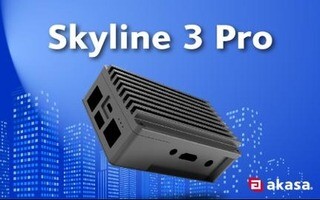Wall-pluggable PC powers multimedia video applications
November 01, 2009

A small embedded computer with a MIPS-based RISC processor provides full-function multimedia video performance.
Many people see the world from the perspective of a desktop computer in an office or home. However, the world outside is much bigger and more varied. There are much larger computers, like supercomputers and other high-performance computing platforms, and much smaller computers, like nettops or netbooks using an Intel Atom processor or other low-power chipset.
Chip PC of Israel manufactures some of the world’s smallest embedded computers, some smaller than a power supply brick for a USB device. These computers fit in a little hole in the wall similarly to how an AC power outlet, light switches, dimmers, and Ethernet ports are wall-mounted. Except for a thin cover plate, these sockets and devices can be located inside a wall and flush with the surface. While standardized holes in Europe are 68 mm (2.7") wide and 45 mm (1.8") deep, holes in North America measure 4.56" x 2.78" (114 mm x 69.6 mm).
The Jack PC LXJ 2311 thin client/virtual desktop shown in Figure 1 is a complete embedded computer with operating system (Linux or Windows Embedded CE), flash disk, RAM, Ethernet, audio and video (DVI or VGA 1600 x 1200) outputs, 4x USB 2.0, and other options. Some models have single DVI (1920 x 1200) or Dual-DVI (1024 x 768). The CPU is a MIPS-based RISC processor equivalent to a 1.8 GHz x86, according to Chip PC. An Intel Atom processor and chipset alone would consume more power (5 W) than a complete LXJ 2311, including main memory, mass storage, and peripheral interfaces (3 W, 0.35 W in sleep mode). The system can use Power over Ethernet (PoE) as its power source or a small external power unit that fits into the mounting hole.
The Jack PC LXJ 2311 supports heavy in-session applications and provides full-function multimedia video performance. It is optimized for Citrix, Microsoft, and VMware server environments, as well as Microsoft Active Directory and SMS. Use as a pocket office system is also possible. All communication is encrypted. Xcalibur Global management software available from Chip PC presents a single-point, end-to-end solution that combines policy-based management with session shadowing. The software offers fault-tolerant, scalable environments supporting tens of thousands of clients and users.
Application examples include:
- The Jämtland County Council in Sweden uses more than 1,800 Chip PC thin clients throughout the county hospital, saving space on desktops and underneath desks in crowded emergency and patient rooms. There is no fan, so bacteria or other infectious material is not blown around the sterilized facility. Remote management is outsourced to TietoEnator (now Tieto) at a remote site (see the Global Technology column in the June 2008 issue of CompactPCI and AdvancedTCA Systems). Tieto uses Xcalibur Global and software plug-ins from Chip PC as the management tool.
- 20,000 Chip PC thin clients are installed at the Financial Administration in the state of North Rhine-Westphalia in Germany, serving approximately 18 million citizens. The Chip PC thin clients were chosen for their manageability and security aspects.
These examples demonstrate how embedded devices for home and small business applications combine low-power silicon, embedded software, and unique packaging to make a novel idea work.






